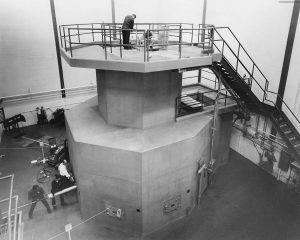

The former TRIGA Mark II nuclear reactor (Advanced Teaching Research Isotope General Atomic) at the University of Illinois left a profound impact on nuclear engineering research and education. The reactor first went critical, operating at a steady power, on August 16, 1960. In the 38 years that the reactor operated, TRIGA enabled faculty and professionals to make discoveries and contribute to the store of knowledge, with research in fission fragment physics, nuclear pumped lasers, nuclear batteries, neutron activation analysis, radioisotope production, nuclear reactor kinetics, coupled reactor core kinetics, and neutron pulse propagation.
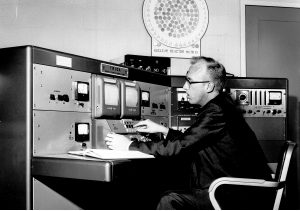
Several generations of nuclear engineering students at Illinois were privileged to have participated in research projects, laboratory studies, and operating experiences. Scores of nuclear industry reactor operators trained on the facility, and thousands of visitors touring the TRIGA learned first-hand about the importance of nuclear energy. Indeed, a number of students entering the Nuclear Engineering program at Illinois were influenced by their tours of TRIGA.
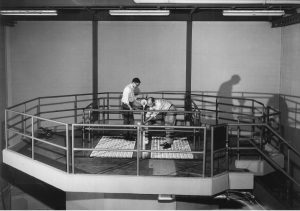
A few key facts about TRIGA include:
- It was the second TRIGA on a university campus, and the facility initially offered the highest power pulsing capability (30-40ms pulses of 1,000 megawatts, with a 100kW licensed steady operating power).
- TRIGA provided access to a central core pump trap (enabling experiment requiring high neutron fluxes during either steady state or pulsing) and a “rabbit tube” passing through the core to provide rapid insertion and removal of samples for irradiation studies.
- A graphite thermal column led from the TRIGA core into the “bulk shielding tank,” a large water tank located next to the main TRIGA water tank. This enabled studies of both steady state and pulsed neutron studies of objects located in the bulk shielding tank. Most notable was the Low Power Reactor Assembly (LOPRA) reactor core. This facility allowed a series of coupled core reactor experiments that provided basic data for large power reactor kinetics.
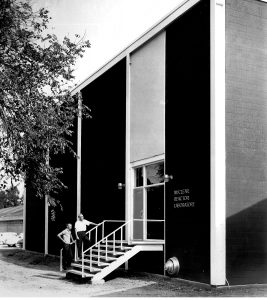
Marvin Wyman and Gerald Beck outside the Nuclear Reactor Laboratory that housed the TRIGA Reactor
TRIGA was shuttered in 1998, and its fuel was removed in 2004. The research and educational opportunities the facility made possible are appropriately noted in nuclear engineering history through TRIGA’s designation in 2015 as an American Nuclear Society National Nuclear Historic Landmark. A marker designating where the reactor had been located stands southeast of the Engineering Sciences Building.
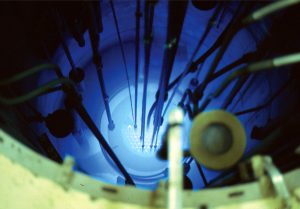
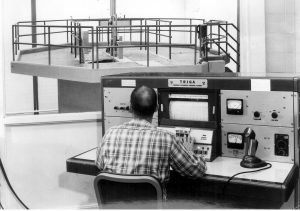
Explore the TRIGA Reactor in this virtual model
Learn more about TRIGA’s title of ANS National Historic Landmark
– Springfield and Goodwin – This is where the TRIGA Reactor was located. There is a marker located here commemorating the nuclear reactor. It is on the southeast side of the Engineering Sciences Building.
– Talbot Laboratory – An exhibit on TRIGA is located on the second floor. Directions: Enter the west doors (off of Wright Street) and go up the set of stairs to the second floor. It is at the top of the stairs. Accessible directions: Enter the east doors (on the Bardeen Quad) and take the elevator on the east side to the second floor. Then follow the hallway to the west staircase.
For more details, please go to https://go.npre.illinois.edu/triga_history and https://npre.illinois.edu/news/former-triga-becomes-national-ans-nuclear-historic-landmark You can find the program for the dedication of the Nuclear Reactor Laboratory (1960) at https://npre.illinois.edu/sites/default/files/Dedication%20of%20the%20nuclear%20reactor%20laboratory.pdf

